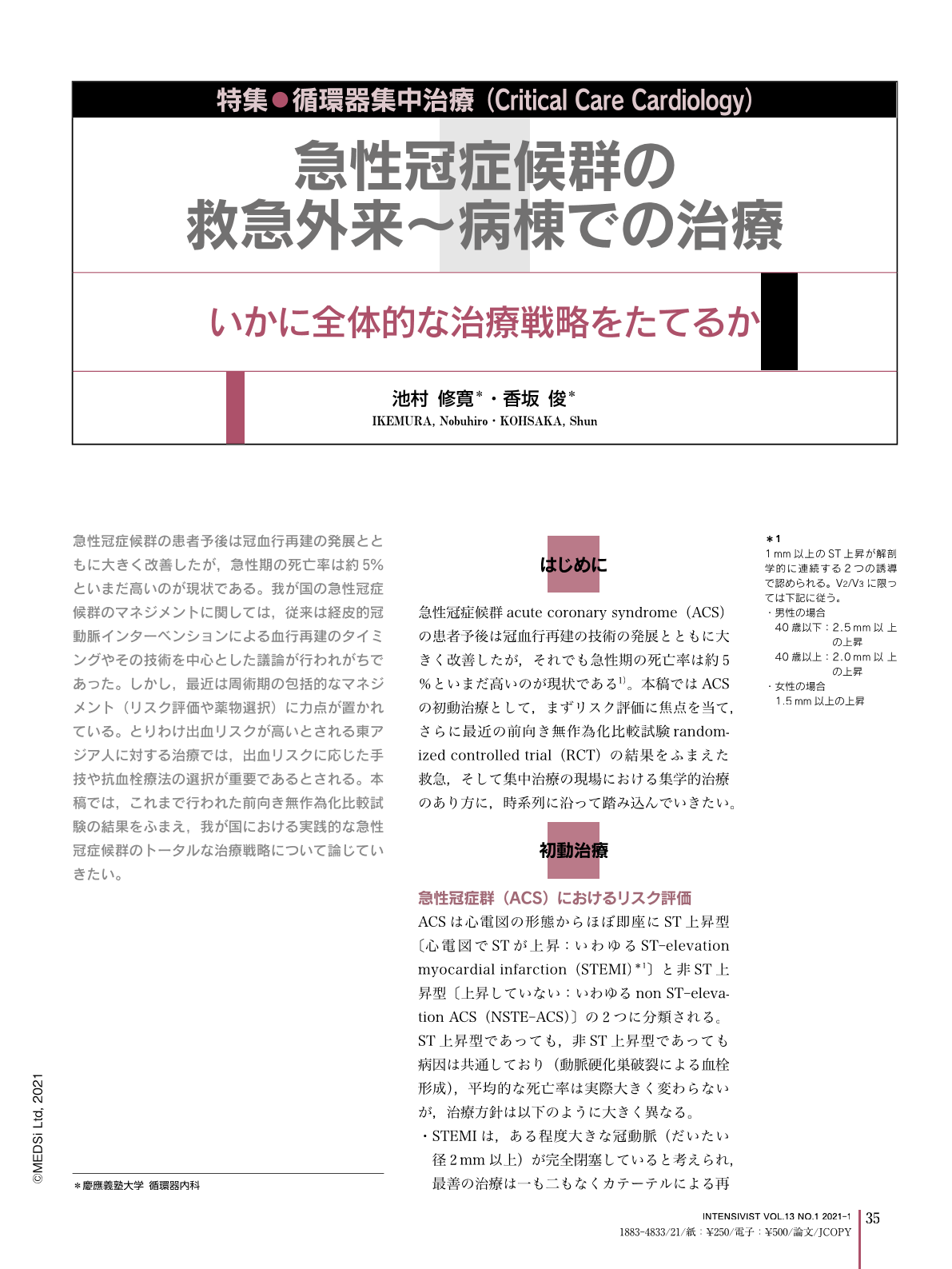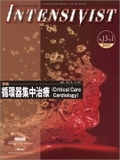Japanese
English
- 有料閲覧
- Abstract 文献概要
- 1ページ目 Look Inside
- 参考文献 Reference
急性冠症候群の患者予後は冠血行再建の発展とともに大きく改善したが,急性期の死亡率は約5%といまだ高いのが現状である。我が国の急性冠症候群のマネジメントに関しては,従来は経皮的冠動脈インターベンションによる血行再建のタイミングやその技術を中心とした議論が行われがちであった。しかし,最近は周術期の包括的なマネジメント(リスク評価や薬物選択)に力点が置かれている。とりわけ出血リスクが高いとされる東アジア人に対する治療では,出血リスクに応じた手技や抗血栓療法の選択が重要であるとされる。本稿では,これまで行われた前向き無作為化比較試験の結果をふまえ,我が国における実践的な急性冠症候群のトータルな治療戦略について論じていきたい。
Widespread use of coronary revascularization and optimized medical therapy have improved outcomes for patients with the acute coronary syndrome (ACS) worldwide. However, short-term mortality in those with ACS remains 5% and is virtually unchanged over the last decade. To further improve patients' outcomes, the risk-based approach by using comprehensive risk scores for mortality and peri-procedural complications has been encouraged in several clinical guidelines for the management of ACS. Since East Asian patients were known to be associated with a higher risk of bleeding events than Western patients, a key challenge will be to recognize individual patients' risk and provide relevant antithrombotic strategies in a fine balance with the ischemic risk. Collectively, this review is intended to provide a more detailed insight into prior clinical studies from both home and abroad and discuss pragmatic management of patients with ACS in acute settings.

Copyright © 2021, MEDICAL SCIENCES INTERNATIONAL, LTD. All rights reserved.


